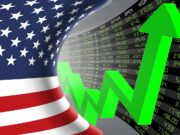On Monday, stocks staged a much-welcome late rebound, with the S&P 500 and Nasdaq Composite both hitting new lows before completing the day higher and showing positivity after the day’s closing as well. The Nasdaq increased 1.63% to 12,536.02, while the S&P 500 increased 0.57% to 4,155.38. The Dow Jones Industrial Average closed at 33,061.50, up 0.26%. At its session lows, the Dow was down more than 500 points. The tumultuous trading day followed a rocky April for markets.
Between January and April of this year, the S&P 500 dropped by more than 13%. That’s the worst four-month start to a year since 1939. Although it isn’t simple to compare today’s stock market to that of 83 years ago, the first part of this year has not been too kind to investors. Through April, the Dow was down 9%, while the Nasdaq was down 21%.
What makes these numbers critical, and how concerned should investors be? Get the rest of the story in the full article here:
Frankly, the stock market has a lot to be concerned about at the moment. To combat inflation, the Federal Reserve is ready to begin hiking interest rates more forcefully. Global investors are spooked by renewed pandemic-related worries, an example being the lockdowns in areas of China. Then there’s the invasion of Ukraine by Russia. All of these issues have heightened fears of a recession.
Amazon (AMZN), Facebook owner Meta (FB), and Netflix (NFLX) have all taken the brunt of the losses. In fact, onetime investor favorite NFLX has shown the poorest performance in the S&P 500 so far this year, down a shocking 68%. But, traders have a fitting catchphrase: “Stocks climb a wall of worry.” Markets generally rally during difficult times, partly because investors anticipate a brighter future.
The obvious burning question is, has the worst yet to come for stocks, or is the overall marketplace hitting its bottom? Some economists believe there are reasons to keep an optimistic outlook. Silvercrest Asset Management’s managing director Robert Teeter wrote on Monday, “The markets are likely giving too little credence to supply chain progress, anti-inflationary policy moves and energy market resilience – all of which appear to be moving in the right direction and could improve sentiment and valuation in due course.” Teeter went on to say that the employment market is still strong and that profit reports for the first quarter have, overall, been respectable. This is despite a few hiccups, notably in the tech sector.
However, consumers in the U.S. aren’t exhibiting any indications of concern yet. Although consumer confidence and mood have been dropping due to inflation fears, retail sales have remained high, a behavior some economists have nicknamed “revenge spending” after two devastating pandemic years.
There are valid concerns that the pairing of interest rate increases and greater oil costs may eventually lead to a recession or even stagflation – which is defined as weak growth combined with rising consumer prices. However, it does not appear like we are quite there, which is good news for both seasoned investors and those new to the marketplace.
Investors are anticipating a statement on monetary policy from the Federal Open Market Committee on Wednesday. The decision will be announced at 2:00 p.m. ET, followed by a news conference at 2:30 p.m. by Federal Reserve Chairman Jerome Powell. Also, when the April jobs data is issued on Friday, another significant economic indicator will be released. Let’s cross our fingers for small victories in the short-term, and in the long-term, an economy that not only recovers but becomes stronger in the process.












